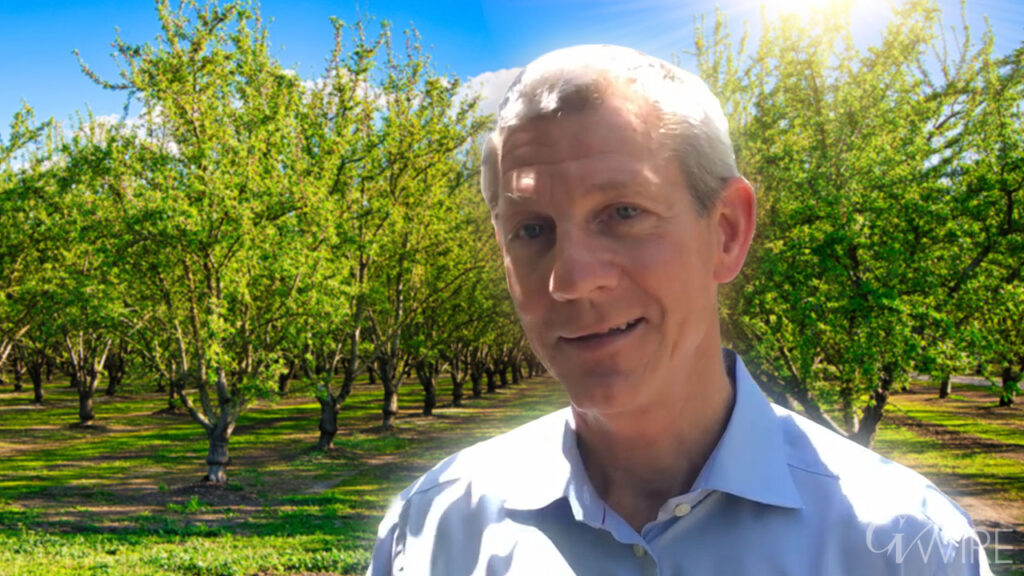Share
A state report released in December pinned blame for sinking along the California Aqueduct on excessive nearby groundwater pumping to irrigate vineyards and nut orchards.
That was a pretty pointed finger, but not pointed enough for some committee directors in the large and powerful Metropolitan Water District of Southern California.
The issue came up at a meeting of MWD’s Water Planning and Stewardship Committee on Feb. 10 where a presentation was given about subsidence along the Aqueduct. Ted Craddock, acting Deputy Director of the Department of Water Resources gave the presentation and answered questions.
“How close are we to identifying which pumpers they are?” said Steve Blois, a Calleguas Municipal Water District board member.
“Our studies up to this point have been a little more global so not as granular,” Craddock answered. “We’re starting to move into the more granular look at specific causes right now. I imagine it will take us on the order of a year or so to work through that.”
Subsidence Cuts Aqueduct’s Capacity 20%
Subsidence has already diminished the Aqueduct’s carrying capacity by 20%. If that trend continues, it could be a huge problem for MWD, which is the largest contractor on the State Water Project and provides water to millions of residents in Southern California.

“How close are we to identifying which pumpers they are?” — Steve Blois, board member of Calleguas Municipal Water District
Though the report put the blame on agriculture, others disagreed saying it was a “knee jerk reaction” that didn’t acknowledge groundwater on the west side tends to be too salty for crops so there isn’t much pumping there.
“It’s easy to say, ‘Hey, this area is subsiding and, by the way, there’s ag here.’ But it’s not taking into account where the water for that ag is coming from,” Jason Gianquinto, General Manager of Semitropic Water District, told SJV Water back in January. Semitropic covers an area of the Aqueduct near Lost Hills that has sunk up to four feet.

Groundwater Recharge Could Reverse Some of the Sinking
Last week, Craddock explained to the MWD committee that some of the ground compaction is permanent. But some subsided areas may be repaired through groundwater recharge.
Craddock said his staff is working with the Groundwater Sustainability Agencies near the Aqueduct to make sure subsidence is top of mind.
“Some of these GSPs (groundwater sustainability plans) are five feet tall, so it’s a lot of data to work through,” he said.
Several committee members asked whether the state Legislature was working on funding and questioned the timeline for a fix.
Craddock didn’t have an answer on funding but said the environmental and feasibility studies would take up to three years.

Repair the Damage ASAP
That didn’t sit well with Committee Director Glen Peterson, of the Los Virgenes Municipal Water District, who noted crews quickly swarmed the Aqueduct when it suffered a break in the lining near Taft in 2016.
That 2016 break, which turned out to be 11 or 12 breaks along a three-mile area was caused by very fine talc soils, Peterson said. Similar soils can be seen along the Aqueduct for 100 miles or more, he added.
The talc compacts very easily, so if that’s what’s under the Aqueduct for any length, “We’ve got a serious problem,” Peterson said.
He also noted the Legislature didn’t bother to enact groundwater restrictions for many, many years, so even if pumping is exacerbating the soil issue, it’s a statewide problem.
“This affects more than half the state,” he said of water carried by the Aqueduct. “The Legislature should take this up.”
Craddock agreed the issue is serious: “I’ll make the commitment that this has our full attention moving forward.”
Links to More Information
Click here to listen to the MWD Water Planning and Stewardship Committee meeting on Aqueduct subsidence
Read the presentation by Ted Craddock, acting Deputy Director of DWR, at CA Aqueduct Subsidence Presentation MWD WPS
Click here to download the DWR report on Aqueduct subsidence (patience needed, it’s a biggie!)
About the Author
Lois Henry is the CEO and editor of SJV Water. She has 30 years’ experience covering water and other issues in the San Joaquin Valley. Henry lives with her husband, five dogs, one orange cat, and a cranky rescue mustang horse in Bakersfield.
Categories

Bowing to Congress, Justice Department Releases More Epstein Records



















